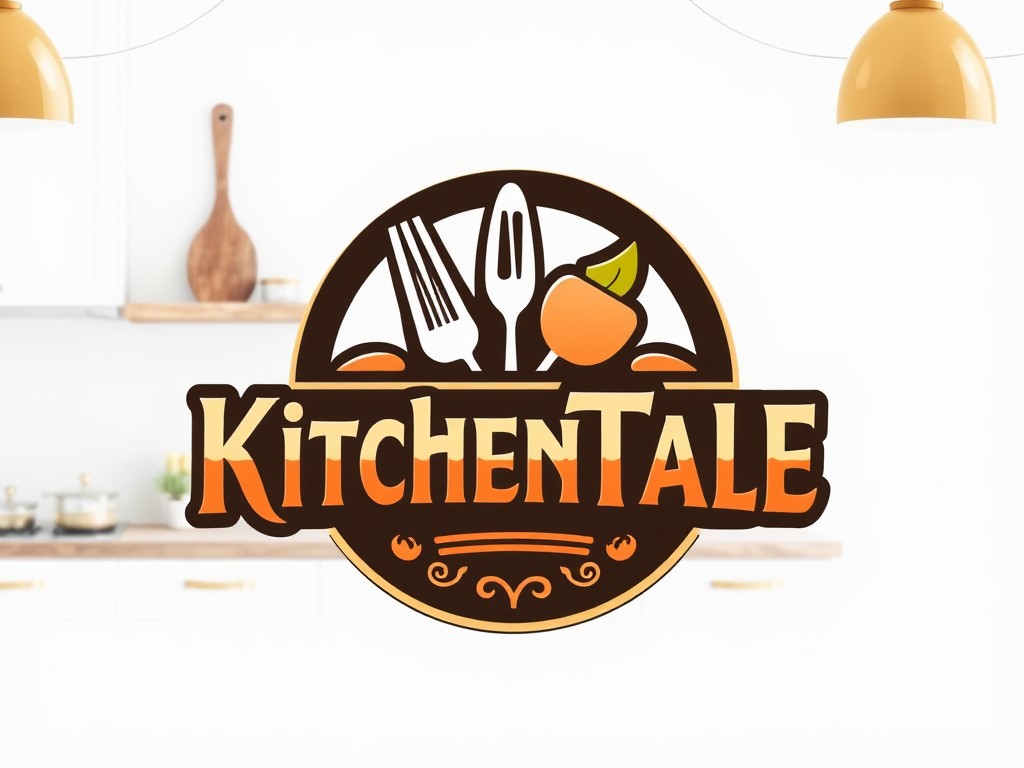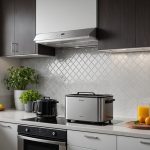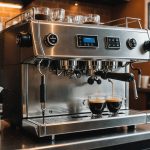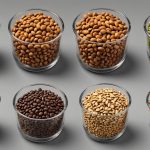Understanding UV Light Sanitizers and Their Role in Kitchen Safety
In the realm of food safety, UV light sanitizers are gaining traction as an innovative method for maintaining kitchen sanitation. These devices employ ultraviolet light technology, which has long been recognised for its ability to destroy pathogens and maintain hygienic conditions. By targeting and dismantling the DNA of bacteria and viruses, UV light renders microorganisms inactive, impeding their ability to reproduce and pose a threat.
UV light sanitizers are often compared to traditional sanitization methods, such as chemical disinfectants and thermal processes. While each method boasts unique benefits, UV technology stands out due to its non-chemical properties and ability to sanitize surfaces and hard-to-reach areas with minimal residues. This makes it particularly advantageous in environments where contact with chemicals should be minimized, such as in food preparation spaces.
This might interest you : Elevate your kitchen”s air quality: discover the health advantages of uv-c air purifiers for eliminating harmful contaminants
Effectiveness-wise, studies have shown UV light to eliminate up to 99.9% of harmful micro-organisms, potentially surpassing some conventional methods. However, its efficiency can be influenced by factors such as exposure time and surface accessibility. Therefore, when applied correctly, UV light sanitizers can significantly enhance food safety by offering an additional layer of protection against contaminants. Integrating UV devices into your kitchen routine could be a forward-thinking step towards safeguarding health and hygiene.
Benefits of Using UV Light Sanitizers in Food Preparation
Incorporating UV light sanitizers in food preparation can be highly beneficial, particularly for ensuring food safety and extending the shelf life of produce. UV light sanitizers dramatically reduce contamination risks by effectively eliminating bacteria and viruses present on food surfaces. This reduction in microbial load helps in ensuring that the food is safer for consumption, meeting health standards effortlessly.
Also read : Transform your kitchen with a yogurt maker: enjoy guilt-free indulgence and health benefits!
When it comes to prolonging the shelf life of food, UV light sanitizers play a significant role in delaying spoilage. By reducing the presence of spoilage organisms, they help maintain the freshness of food for longer periods. This is particularly crucial for businesses and households aiming to reduce food waste and manage better inventory.
Interestingly, the impact of UV light sanitizers extends beyond just safety and longevity. They also have a positive influence on the nutritional value of food. For example, UV exposure can enhance or preserve certain vitamins and antioxidants in fresh produce, thus helping retain the nutritional content. This allows consumers to enjoy healthier meals without compromising on their food’s nutritional benefits.
Opting for UV light sanitizers can, therefore, be considered a practical solution for boosting food quality while ensuring greater health and safety standards in food preparation environments.
Mechanisms of Action: How UV Light Works Against Pathogens
Understanding the mechanisms of action behind UV light is crucial when considering its role in pathogen control, especially regarding UV light pathogens and improving food safety measures.
Types of UV Light Used in Sanitization
UV light comprises various types, but only certain spectrums are suited for sanitization purposes. UV-C light is the most effective for pathogen inactivation. This type of light possesses a wavelength range of 200-280 nanometres, which is specifically adept at disrupting the DNA and RNA of microorganisms, making it a potent tool against viruses, bacteria, and fungi. The precise mechanisms of action involve direct absorption by these nucleic acids, resulting in cellular damage and preventing replication.
The Science Behind UV-C Light Effectiveness
The effectiveness of UV-C light hinges on its ability to induce photodimerization within the nucleic acids of pathogens. This process leads to the formation of pyrimidine dimers, which obstruct cellular processes such as transcription and translation, ultimately causing cell death. This comprehensive understanding of the mechanisms of action showcases how UV light pathogens are rendered inactive, thereby improving food safety.
The Specific Pathogens UV Light Targets
UV-C light specifically targets a wide range of pathogens. This includes common bacteria such as E. coli and Salmonella, both notorious for causing foodborne illnesses. Additionally, viruses like Influenza and Norovirus are susceptible, thereby highlighting UV-C’s pivotal role in enhancing food safety protocols.
Recommended UV Light Sanitizer Products for Home Kitchens
When considering UV light sanitizers for kitchen use, it’s essential to evaluate a few key factors: effectiveness, ease of use, and budget. Popular recommended products in this category are praised for their ability to sterilize surfaces without using harsh chemicals, providing a safer environment for food preparation.
Overview and Features
Several highly-rated UV light sanitizer models offer distinctive features like automatic shutoff and portable designs. These features enhance usability, making them convenient additions to any kitchen setup. For instance, a model that has a built-in timer provides added safety by ensuring the device turns off after use, preventing unnecessary exposure.
Comparison of Effectiveness
Effectiveness can vary among UV light sanitizers. Some models boast a higher percentage of germ eradication due to their increased power or extended exposure time. When comparing products, it’s beneficial to look for independent testing that supports the manufacturer’s claims. Ease of use plays a crucial role too, with some devices offering simple one-button operations.
Budget Considerations
All home appliances come with varying price tags, and UV light sanitizers are no exception. Depending on the features and brand, prices can range significantly. For those on a tighter budget, some cost-effective options prioritize essential sanitizing functions without additional features, making them a practical choice for efficient kitchen sanitation.
Guidelines for Effective Use of UV Light Sanitizers
Navigating the world of UV light sanitization involves understanding the best practices to ensure effective use. Proper positioning and timing of UV exposure are key elements. For optimal results, UV sanitizers should be positioned within direct line-of-sight with the object being sanitized. This ensures that UV light reaches all surfaces without obstacles. The duration of exposure also matters; a too brief exposure might not sanitize effectively, while excessively long exposure can be unnecessary and unsafe.
Safety precautions during operation are paramount. Users should always avoid direct skin or eye contact with UV rays, as they can be harmful. It is advisable to wear protective gear, such as gloves and goggles, if there is any risk of exposure. Ensuring the room is unoccupied while UV devices are operating adds an extra layer of safety.
Integrating UV sanitization into a food preparation routine requires a planned approach. Designate a specific time each day for running UV sanitizers, preferably during periods of inactivity in the kitchen. This practice helps maintain cleanliness without disrupting the workflow. By adhering to these guidelines, users can maximize the efficacy and safety of UV light sanitization processes.
Potential Risks and Safety Considerations
When considering UV light as a kitchen sanitizer, understanding safety precautions is essential. While UV light provides effective disinfection, there are potential risks associated with exposure. Prolonged exposure to UV light can lead to skin irritation and eye damage. To mitigate these risks, devices typically incorporate shields or housing to contain UV rays during use, preventing direct exposure.
Safety considerations also extend to the correct usage of UV sanitizers. In a home kitchen, misuse can pose hazards, such as accidental exposure while the device is operational. Users should always follow the manufacturer’s instructions meticulously. This includes ensuring the UV sanitizer operates in a closed environment, like a cabinet or container, further reducing exposure risks.
Furthermore, several regulatory guidelines exist surrounding UV light devices, designed to ensure consumer safety. These include specific standards for device emissions and operational safety features. Compliance with these regulations—often indicated by certifications or labels—assures users that the device is deemed safe when used correctly. It’s also advisable to check that the device has third-party testing approval, offering additional peace of mind.
By adhering to these safety considerations, using UV light in the kitchen can remain a practical and efficient cleaning solution, negating many associated risks.
Case Studies and User Experiences
The diverse user experiences with UV light sanitizers reveal a compelling narrative of enhanced household health standards. Real-life case studies showcase how families have seamlessly integrated these sanitizers into their daily routines. For instance, one household in London reported a noticeable reduction in foodborne illnesses after regular use. They attributed this to the UV light’s effectiveness in eliminating harmful bacteria from their kitchen surfaces.
Analysing consumer feedback, a pattern emerges of overwhelmingly positive sentiments. Many users praise the noticeable improvements in food safety and longevity. One user noted, “The fruit and vegetables stay fresh longer, eliminating waste drastically.” This testimonial underscores the UV light’s effectiveness in extending the shelf life of perishables.
Before-and-after comparisons further reinforce these findings. In a specific case, a user observed that food previously spoiling within days now remained consumable for a significantly extended period. These findings reiterate the UV light’s effectiveness in maintaining food integrity.
Ultimately, these experiences provide practical insight, aiding potential buyers in making informed decisions about incorporating UV technology into their homes. With evidence pointing towards improved food safety and longer-lasting freshness, UV light sanitizers hold significant promise for household health improvement.
Future Trends in UV Light Sanitization for Food Safety
As health considerations escalate, food safety innovation becomes critically essential. Emerging technologies in UV light sanitization are paving the way for a safer future. One notable trend is the development of advanced UV light systems that are capable of more precise and effective sanitization. These systems use UV light technology to deactivate pathogens on food surfaces and kitchen equipment swiftly, ensuring higher standards of cleanliness.
Predictions suggest that as the technology evolves, UV light sanitization will become a staple in both commercial and domestic kitchens. Kitchen safety measures are expected to integrate seamlessly with these UV systems, offering a reliable line of defence against foodborne illnesses. Such developments are not just about enhancing sanitation but are also significant for reducing the reliance on chemical sanitizers, thus addressing environmental concerns.
The growing emphasis on food safety reflects the increasing health consciousness among consumers. As people become more aware, there’s a push towards adopting these innovative sanitization methods. This shift not only improves food safety but also aligns with a broader trend towards sustainability in food handling. Therefore, future trends in UV light technology are not just about addressing current challenges but also about revolutionizing how we ensure food safety in the years to come.











